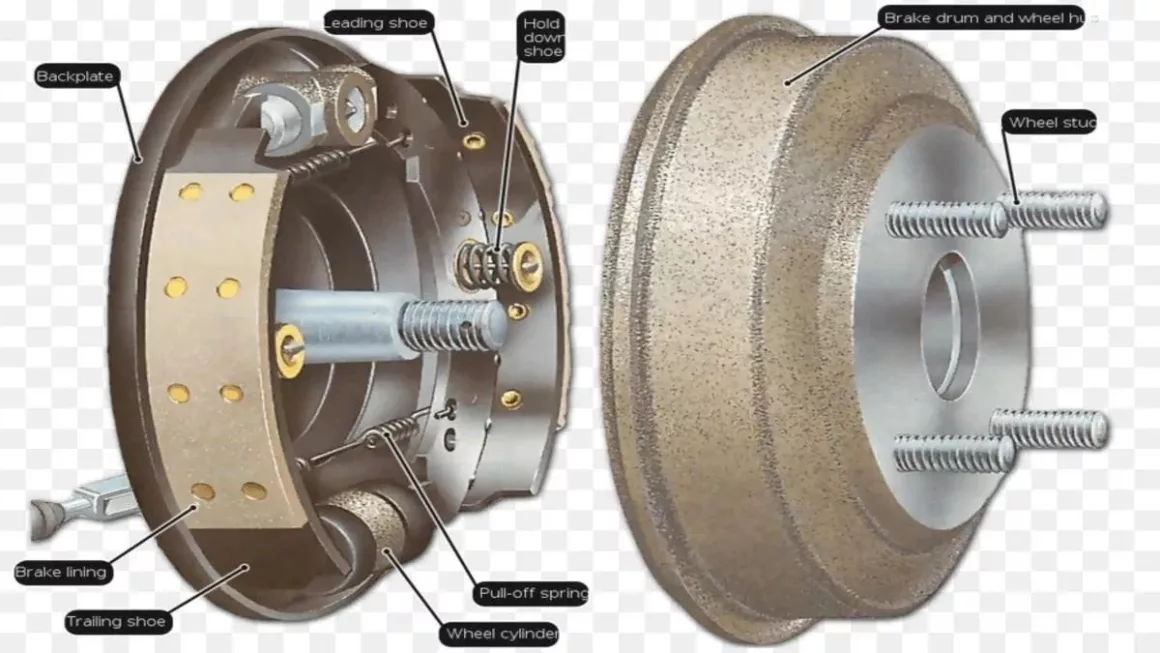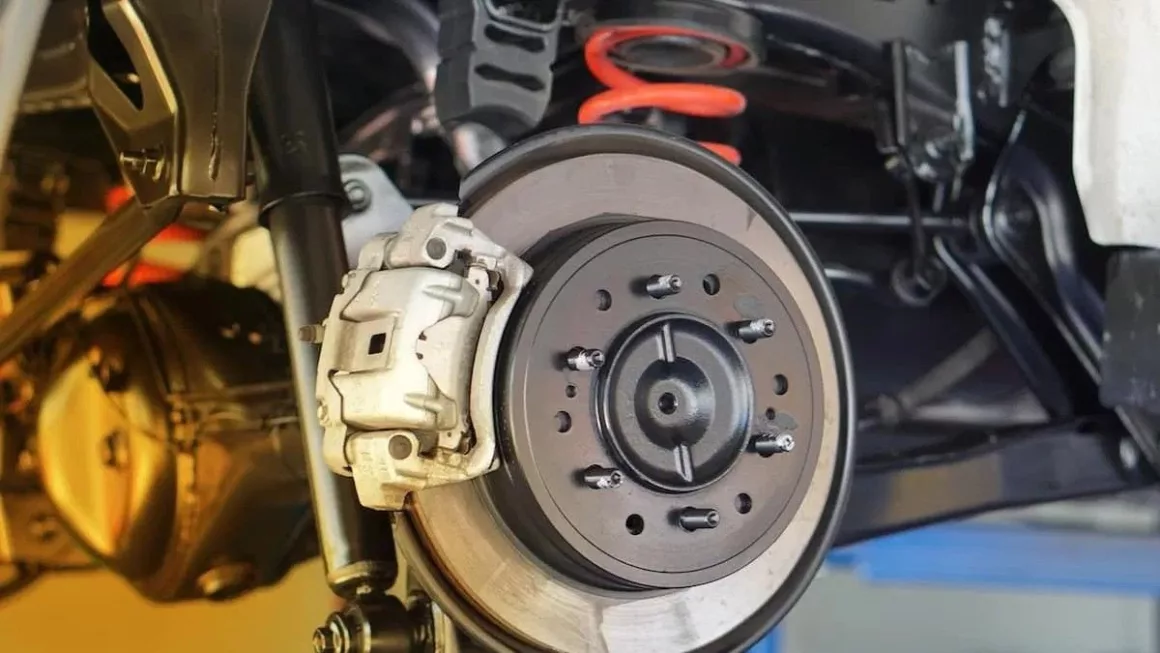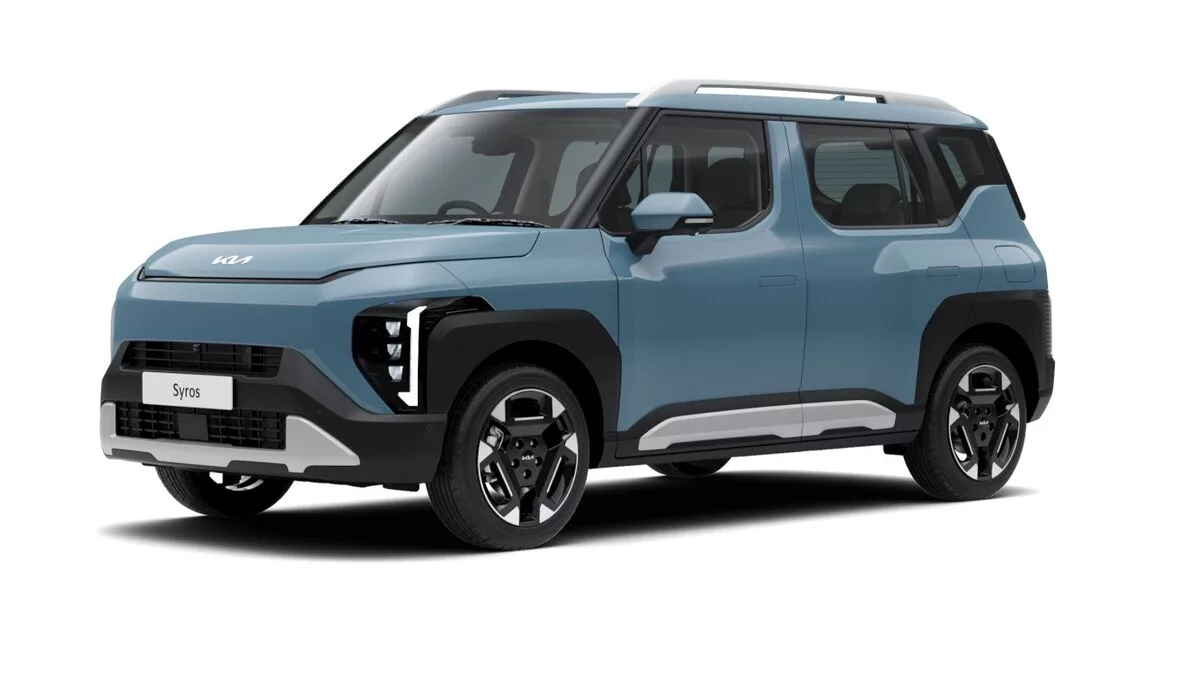Brakes are undoubtedly some of the most critical components of any vehicle. While they may seem straightforward in operation—just a gentle press on the brake pedal and the car slows down, their construction and functioning is intricate. Naturally, brakes have evolved over time and now come in several forms, shapes, and sizes. While the type of brakes used differ from vehicle to vehicle, they are categorised in a broad way. In this article, we break down the types and forms of brakes in the market today:
Table of Contents
- Braking Systems
- Types of Brakes
- Popular Modern Braking Features
- Summary
- Frequently Asked Questions For The Different Types of Brakes:
Braking Systems
Before actually jumping into the types of brakes, one should understand the different types of braking systems. Understanding the difference between types of brakes and types of braking systems is crucial for understanding how vehicles slow down and stop. Types of brakes specifically refer to the physical components like disc brakes and drum brakes, which directly create friction to slow down the vehicle. On the other hand, types of braking systems encompass broader categories such as hydraulic, regenerative, and mechanical systems, which cover the entire method and technology used to convert kinetic energy into heat through friction.
With that in mind, here are the types of braking systems:
ALSO READ: Active Safety Features: Everything you need to know
Mechanical Brakes:
Mechanical brakes were used widely before the 1950s. Their technology worked well before the average car was capable of clocking 3 digit speeds in a matter of a dozen seconds.
How it Works:
- Mechanical Brakes use a system of rods and levers to transfer the force from the pedal to the brakes on the wheels.
- Pressing the brake pedal applies force to one end of a system of rods and levers.
- This force is multiplied through the levers and rods, eventually reaching the brakes on each wheel.
- The brakes press against the wheels to slow the car down.
Hydraulic Brakes:
This is the main and popular brake system in use today. It uses brake fluid, a special type of oil, to transfer the force from the pedal to the wheels. This offers a significant increase in braking power compared to mechanical systems.
How it Works:
- When you press the brake pedal, it pushes on a piston inside a master cylinder.
- This pressure travels through brake fluid in tubes to pistons at each wheel.
- The pressure from the brake fluid pushes the brake pads on each wheel against the disc, slowing the car down.
Modern hydraulic braking systems are stronger than old mechanical brakes because the hydraulic system magnifies the force applied by the foot, exerting a greater force on the wheels to slow down the car effectively.
ALSO READ: Engine Oil Grades Explained
Brake-by-wire
This is the latest technology that’s making its way into cars. It ditches the traditional hydraulic system altogether and relies on electronic signals instead.
How it works:
- When you press the brake pedal, a position sensor measures how much you’ve pressed down.
- This sensor sends an electronic signal to a computer.
- The computer then controls how much pressure is applied to the brakes at each wheel by activating electric motors or magnets in a mechanism similar to a traditional calliper and piston system.
The final braking force in this system is generated mechanically through callipers and pistons. However, what distinguishes it as “by-wire” is its reliance on electrical signals rather than a traditional physical connection like brake fluid for controlling that force. This allows for more precise control and safer braking systems. This capability is also why most Advanced Driver Assistance Systems (ADAS) are possible, as this system enables integration with features such as automatic emergency braking.
Types of Brakes
Drum Brakes

Drum brakes have been around for over a century and were the most commonly used braking system in cars until the late 2010s in India. Today, while disc brakes have become quite popular, drum brakes are still widely used on the rear wheels of many cars, particularly smaller cars that don’t need too much braking power.
How they work:
- Like most brakes, drum brakes use friction to slow down a vehicle.
- Drum brakes consist of a rotating cylinder, called a drum, which is connected to the wheel and rotates with it. Inside the drum, brake shoes are positioned to press against its inner surface, and springs are used to retract the shoes when braking pressure is released.
- When the brake pedal is pressed, the shoes are forced outwards against the drum, creating friction that slows the wheel down.
Advantages:
- Cheaper: Drum brakes have a relatively simple design with fewer moving parts compared to disc brakes. This makes them generally less expensive to manufacture and maintain. Thus, you commonly find them on budget cars.
- Self-Servo Effect: Drum brakes have a natural self-servo effect. As the car slows down and the wheels rotate slower, the rotation of the drum causes the brake shoes to press themselves even harder against the drum, providing some additional braking force.
- Ideal for Off-roading enthusiasts: In drum brakes, it’s the back plate that encloses the braking components, providing protection against contamination from dirt, water, or road debris. This design feature is particularly advantageous in off-road driving conditions.
ALSO READ: Best Maintenance Practices for Used Car Owners
Disc Brakes

Disc brakes were invented in the early 1900s and became increasingly popular throughout the late 80’s and 90’s in Western countries, and post-2015 in India. Today, they are the predominant braking system used on most cars and SUVs, particularly for the front wheels.
How they work:
- Disc brakes also use friction to slow down your car.
- Disc brakes have a flat, metal disc attached to your car’s wheel.
- When you press the brake pedal, a metal clamp squeezes two brake pads onto the sides of this disc.
- The squeezing creates friction, which slows down the spinning disc (and the wheel with it) to slow down your car.
Pros of Disc Brakes:
- Better Stopping Power: Disc brakes offer better stopping power compared to drum brakes. This is because they dissipate heat more effectively, which helps to prevent brake fade, a condition where the brakes become less effective due to overheating.
- Lasts Longer: As mentioned earlier, disc brakes are better at dissipating heat. This makes them less prone to brake fade, especially during sustained braking or heavy use. As a result, disc brakes last longer.
- More Precise Braking: The design of disc brakes allows for more precise control over the braking force compared to drum brakes.
- Lighter Weight: Disc brakes are generally lighter than drum brakes, which can contribute to better overall vehicle performance.
Hand Brakes/Parking Brakes
The handbrake, also known as a parking brake or emergency brake, is a separate braking system from the main brakes. While you wouldn’t use them for regular braking while driving, they play a key role in parking. This brake is engaged by a lever that’s often located between the driver’s and passenger’s seats. Nowadays, there are electronic parking brakes, which can be seen in the form of a switch.
In a rare situation where the main brakes fail, the handbrake can be used as a backup to slow the car down. However, it’s important to note that handbrakes aren’t as powerful as the main brakes, so use them with caution in such scenarios.
How it Works:
- The handbrake usually uses a cable mechanism to engage the brakes on the rear wheels.
- When you pull the lever, the cable tightens and activates the brakes, holding the car in place. In some vehicles, the handbrake might be connected to the rear drum brakes directly.
Advantages
- Simple and Reliable: The handbrake’s design is straightforward and has proven reliable for decades.
- Independent System: The handbrake functions independently of the main braking system. This means that even if there’s an issue with the main brakes, the handbrake should still work.
Popular Modern Braking Features
ABS
This system prevents the wheels from locking up during hard braking. Locking wheels can cause the car to skid, which reduces steering control. ABS rapidly pumps the brakes to maintain traction and allow the driver to steer around obstacles.
Electronic Brake-force Distribution (EBD)
This system distributes braking force between the front and rear wheels depending on driving conditions and weight distribution in the car. This helps prevent the wheels from locking up and ensures the car stops straight and safely.
Electronic Stability Control (ESC)
This system is a lifesaver in situations where the car loses traction, like when swerving to avoid an obstacle. It utilises a combination of ABS (Anti-lock Braking System), engine control, and selective braking on individual wheels to help the driver regain control by preventing wheel lock-up and adjusting braking force as needed to stabilise the vehicle during manoeuvres or emergencies.
ALSO READ: Types of Car Engines
Summary
Brakes are a crucial safety feature, and understanding how they work can give you a greater sense of what technology keeps you safe on the road. By understanding these different braking systems and features, you can make sound decisions about maintaining your car’s brakes. Remember, regular brake checks and maintenance are essential to ensure your car stops safely whenever you need it to.
Frequently Asked Questions For The Different Types of Brakes:
Q. What are the 3 common types of brakes?
Cars use 3 main braking systems: disc brakes (common on front wheels for strong stopping), drum brakes (often found on rear wheels in modern-day cars), and parking brakes (a lever found in the centre console with a distinct system for holding a parked car).
Q. What is the classification of brakes?
Car brakes can be classified based on how they transfer the pressing force from the brake pedal to the wheels. There are three main types: Mechanical brakes, Hydraulic Brakes and Brake-by-wire. Mechanical brakes use a system of rods and levers to apply pressure. Hydraulic brakes use brake fluid to transmit the pressure and Brake-by-wire brakes use electrical signals to control the braking force.
Q. Which type of brake is used in cars?
Cars in India use two main types of brakes: Disc brakes and Drum Brakes. While disc brakes are becoming more common these days, they are mostly found on the front wheels for their strong stopping power. Some cars have disc brakes on all four wheels for their higher, more expensive trims. Drum brakes are often used on rear or on all four wheels in budget cars and small cars.





